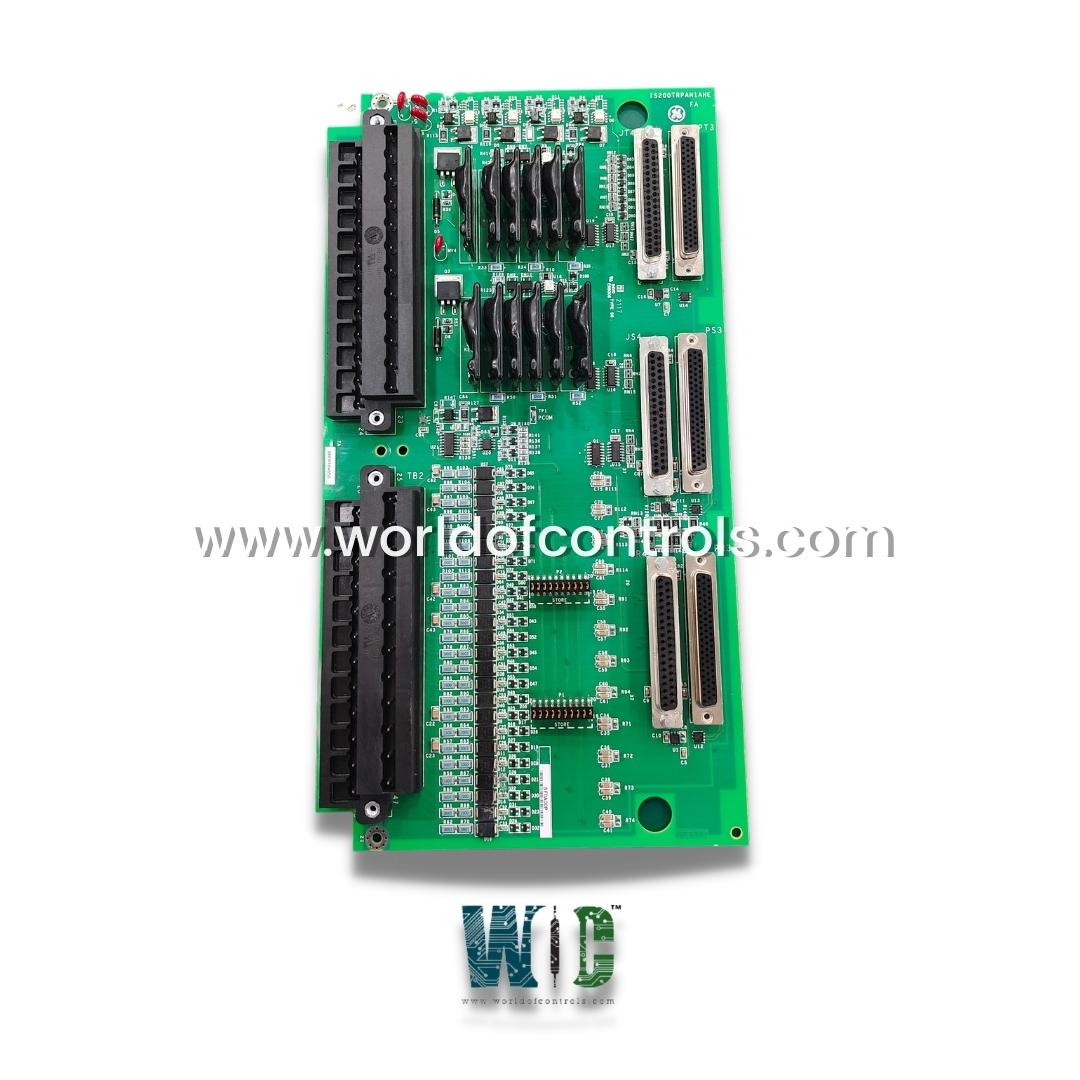
World Of Controls understands the criticality of your requirement and works towards reducing the lead time as much as possible.
IS200TRPAH1A - Aeroderivative Turbine Primary Trip Terminal Board is available in stock which ships the same day.
IS200TRPAH1A - Aeroderivative Turbine Primary Trip Terminal Board comes in UNUSED as well as REBUILT condition.
To avail our best deals for IS200TRPAH1A - Aeroderivative Turbine Primary Trip Terminal Board, contact us and we will get back to you within 24 hours.
SPECIFICATIONS:
Part Number: IS200TRPAH1A
Manufacturer: General Electric
Series: Mark VIe
Product Type: Aeroderivative Turbine Primary Trip Terminal Board
Number of inputs: 4
Number of outputs: 2
Board Size: 33.0 cm high x 17.8 cm
Operating Temperature: -30 to 65oC
Technology: Surface Mount
Repair: 3-7 Days
Weight: 2 lbs
Country of Origin: USA
Availability: In Stock
Manual: GEH-6721L
FUNCTIONAL DESCRIPTION:
IS200TRPAH1A is an Aeroderivative Turbine Primary Trip Terminal Board manufactured and designed by General Electric as part of the Mark VIe Series used in GE distributed control systems. The Mark VIe / VIeS control system uses the Aeroderivative Turbine Primary Trip TRPA1A and 2A terminal boards in conjunction with PTUR / YTUR I/O packs and TTUR terminal boards. The following are the inputs and outputs:
INSTALLATION:
The I/O terminal blocks TB1 are connected for TTL pulse rate pick-ups, voltage detection, E-Stop, and the breaker relay. TB2 is wired with passive pulse rate pick-up devices. Each block has 24 terminals that may accommodate wires up to #12 AWG and is secured with two screws. Each terminal block is followed by a shield termination strip connected to the chassis ground. Using the following table, the TRPA must be set up for the input connections at the specified speed. Jumpers JP1 and JP2 determine whether the pulse rate pickups from the R section are fanned out to the S and T PTURs or YTURs.
OPERATION:
The TRPA board is made to be used in two distinct ways. Three cables with DC-37 pin connectors on each end can be used to connect the TTUR terminal board to the TRPA terminal board when it is holding three PTUR or YTUR I/O packs. The TRPA offers four voltage sensors, ESTOP, and two contact-voted trip relay outputs in this mode of operation. The typical set of features listed for that board are offered by TTUR. The TRPA speed inputs should not be connected with this board configuration because they are inactive.
Three I/O packs that are directly mounted to the TRPA board can also be utilized with it. This mode of operation enables a single terminal board primary trip solution since the speed inputs to TRPA become active routes into the I/O pack.
CONFIGURATION:
Jumpers JP1 and JP2 control the fanning of the four passive speed pickups in the R section to the PTURs or YTURs in the S and T sections. To fan the 4 R speed input to the other two TMR sections, place the jumper over the pin pairs.
WOC has the largest stock of GE Mark VIe & VIeS distributed control system replacement parts. We can also repair your faulty boards and supply unused and rebuilt boards backed up with a warranty. Our team of experts is available round the clock to support your OEM needs. Our team of experts at WOC is happy to assist you with any of your automation requirements. For pricing and availability on any parts and repairs, kindly get in touch with our team by phone or email.
What types of signals are connected to the Primary Trip Terminal Board?
Typical signals include those from temperature sensors, pressure sensors, vibration sensors, and other critical monitoring equipment.
How often should the Primary Trip Terminal Board be inspected?
Regular inspections should be performed as part of routine maintenance. The frequency of inspections can vary based on the manufacturer's recommendations and operational conditions.
How does the Primary Trip Terminal Board work?
It receives signals from various sensors and monitoring systems within the turbine. Based on these signals, it can trigger a turbine shutdown or trip if it detects conditions that could lead to unsafe operation.